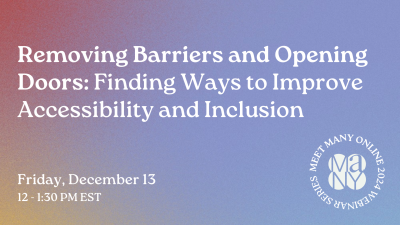
Five years ago, CFM’s TrendsWatch report examined how museums are helping society confront the need for criminal justice reform. Historic sites play an important role in this work, with institutions like the Eastern State Penitentiary in Pennsylvania, and Constitution Hall in South Africa illuminating the long-term damage of mass incarceration. In today’s guest post Brent D. Glass, Director Emeritus of the National Museum of American History, Smithsonian Institution, and now executive director of the Sing Sing Prison Museum, tells us about this new museum joining the roster of sites challenging us to create a more equitable future.
–Elizabeth Merritt, VP Strategic Foresight and Founding Director, Center for the Future of Museums, American Alliance of Museums.
In Ossining, New York, planning is underway to build the Sing Sing Prison Museum (SSPM). The museum will tell the story of the prison’s extraordinary 200-year history. In addition, the museum’s board of trustees made a commitment to challenge visitors to imagine a more equitable justice system and build a better society. The first part of this mission involves a comprehensive narrative that has never been accessible to a general audience. Every chapter in America’s criminal justice history contains a few pages written at Sing Sing Prison. When Alexis de Tocqueville and Gustave de Beaumont visited in May 1831, the institution, opened only three years earlier, had already gained worldwide fame—and infamy. Its scale of operations and penal philosophy of congregate labor attracted commentary and controversy.
In many respects, Sing Sing has been and continues to be the yardstick by which criminal justice in America is measured. The SSPM will engage visitors in the same fundamental and enduring questions and debates that occupied Tocqueville, Beaumont, and successive generations of observers, critics, and reformers. Why do we have prisons? How do we define justice in a society that values freedom and liberty? What is the purpose of punishment and confinement? What is the connection between race, education, and poverty and the administration of justice? What is the impact of recent movements for restorative justice and prison abolition? What is the connection between Sing Sing’s history and contemporary national and international issues?
To address these questions, history is an essential resource. Sing Sing Prison is the birthplace of mass incarceration in the United States. On March 7, 1825, the New York State (NYS) legislature authorized construction of a new penitentiary that would replace Newgate Prison in New York City. By May of that year, Elam Lynds, the warden at Auburn State Prison a few miles west of Syracuse, assembled 114 incarcerated men and a few guards. They traveled through the just completed Erie Canal, down the Hudson River and landed on the riverbank near the village of Sing Sing which means “stone on stone” in the language of the local indigenous peoples. The site was chosen for its proximity 35 miles north of New York; its access to water transportation, and for its “inexhaustible rock quarry,” a limestone deposit known locally as “Sing Sing marble.” The men built barracks and immediately began breaking rocks, building what would become the largest prison in the country. By December 1825, they had constructed 69 cells and they doubled up inside. The massive structure, completed in 1828, measured 476 feet by 45 feet and stood four tiers high with 800 cells. The prison added one tier in 1831 and another in 1855 bringing its total capacity to 1200 cells.
Each cell measured 7 feet long, 6 feet 6 inches high and 3 feet 3 inches wide. There was no indoor plumbing, no natural light, and little ventilation. Sing Sing Prison became a model for the architecture of cellular confinement. The Architect of the US Capitol, Charles Bulfinch, visited the construction site in 1827 and praised “the advantages attending (the design) are, the perfect retirement and privacy of the prisoners, the ease of inspections. . . The security against combination or escape is complete.”
Other visitors were less complimentary. They noted the penal philosophy known as the Auburn system–solitude, silence, hard work and corporal punishment. Tocqueville and Beaumont criticized the “despotism” evident at Sing Sing and other US prisons. These grim conditions persisted until 1917 when construction began on a new prison; however, the old Cellblock remained partially occupied until 1943 when the last cells were removed. For the next forty years, the stone shell of the Cellblock served various purposes–records storage, light manufacturing and a boxing ring. A fire in 1984 destroyed the roof and the abandoned building slowly declined through benign neglect. The Sing Sing Prison Museum plans to stabilize and protect this extraordinary ruin—the prison’s sole 19th century structure—as a site of conscience and the centerpiece of the visitor experience.
The history of Sing Sing’s Cellblock is just one of many stories we will present at the museum. Other stories include:
- The Mt. Pleasant State Prison for Women at Sing Sing (1839-1877), the first building constructed as a women’s prison in the country;
- Sickness and health from cholera in 1832 to COVID in 2020;
- The New York Central and Hudson River Railroad arrived in 1849 and led to the growth of industrial development at Sing Sing;
- The Mutual Welfare League (1914), a form of self-government created by prison reformer Thomas Mott Osborne;
- The leadership of Lewis Lawes, warden from 1920-1941, who introduced modern penology and became the country’s most respected prison official;
- Capital punishment: 614 executions in the prison’s electric chair between 1891 and 1963 including Julius and Ethel Rosenberg on June 19, 1953;
- The work of private reform organizations such as the Fortune Society, Osborne Association, Hudson Link for Higher Education in Prison, and Rehabilitation Through the Arts.
Clearly, the content is rich enough without having to resort to sensationalism or to entertaining visitors with stories of great escapes, celebrity prisoners, and violent rebellions. We will, of course, include these stories when they help inform the larger issues surrounding why we have prisons and how can we make them better.
We have a dedicated and generous board that represents a variety of perspectives: incarcerated individuals and their families; correctional officers and administrators; and victims of crime. In addition to the traditional role of fundraising, committee work and setting policies, the board is determining the location of the museum’s permanent home. Until this year, we planned to reuse the prison’s former Powerhouse for both a Preview Center and long-term site for exhibitions and programs. However, the cost and timetable for securing this site forced us to look at other options, a process that is still underway as of this summer.
Our staff consists of three part-time museum professionals, a social media assistant, and two formerly incarcerated individuals who work as museum associates. They are conducting oral history interviews with formerly incarcerated men and women, including the question “What did you bring home?” about artifacts they kept—books, journals, personal items—as they re-entered society. Connecting with people who can share the lived experience of prison is perhaps the greatest opportunity we have in fulfilling the museum’s mission. We are building a network of people and organizations that will shape collections, interpretive programming, and partnerships. These relationships will be especially important in telling the story of racialized mass incarceration from 1970 to the present. This is a story that should be written by those most impacted by the justice system. The real measure of our success will be the extent to which we truly engage them in planning, designing, building, and managing the Sing Sing Prison Museum. If we open the door for genuine participation in making the museum, they will also be the audience of the future.
Skip over related stories to continue reading article







Comments